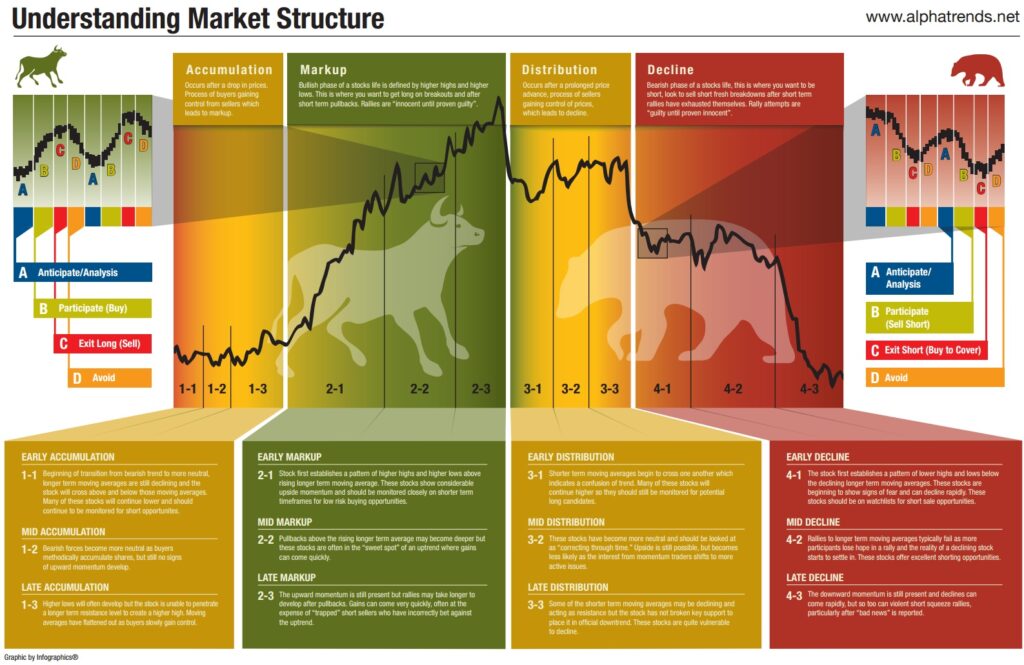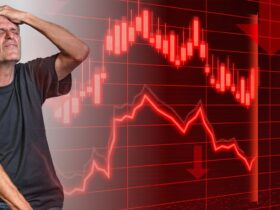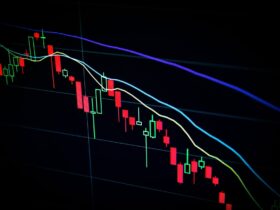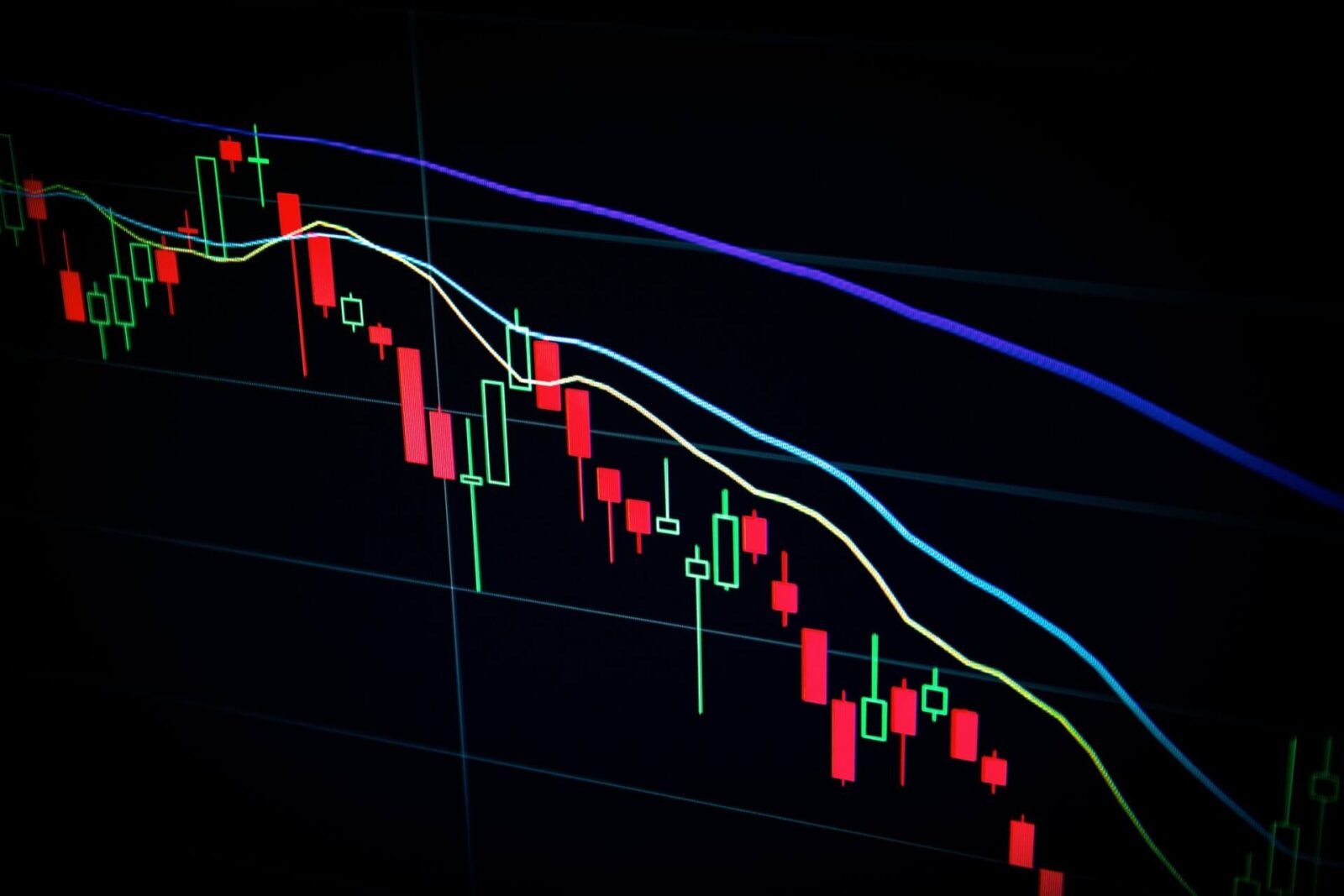The U.S. stocks plunged on Friday afternoon, leading to the biggest one-day drop since 2020 after Federal Reserve Chairman Jerome Powell’s suggested a 50-basis-point rate hike. And while Powell’s remark may have spooked some investors, I still believe that the stock market is an excellent place to be, as explained in a separate article I wrote: Why the Fed Rate Hike Cycle Signals a Buy Opportunity, Not a Sell Signal based on the historical analysis.
While it is important to remember that no one can predict the future and the bottom, that shouldn’t stop us from trying. By analyzing past market data, we can at least get an idea of where we are in the current market cycle. I’ve seen a lot of great investors, and many of them had an incredible sense of how market cycles function and where we are in the current cycle. This information can help you make investment decisions and protect your assets. In this blog post, I will share where I believe the market is currently situated and what that could mean for investors!
Important: Do note that past performance is not indicative of future results!
To gain a broader perspective, I highly recommend you to read: Mastering the Market Cycle: Getting the Odds on Your Side if you haven’t already!
Explaining the Market Cycle
And oh boy, is that true. The market is a fickle beast, always rising and falling following the mystical and ever-changing market cycle. But what exactly is this market cycle, and what factors affect it?
The market cycle is the natural rise and fall of markets. It is affected by various factors, including interest rates, inflation, consumer confidence, and government policy. Market cycles are typically long-term; they can last for years or even decades. The market cycle has four phases: Accumulation, Markup, Distribution, and Markdown.
- Accumulation – This is the initial phase of a bull market, and prices are usually low or trading flat, and there is little interest from the media. The public is still very bearish and convinced that stocks are risky. Despite these facts, the stock market has shown signs of strength. It’s often referred to as “the best time to buy.”
- Markup – Price starts to rise, eventually attracting new investors who buy higher-priced assets out of FOMO (fear of missing out). The longer a stock remains in Accumulation, the more powerful its ascent up into Markup.
- Distribution – During this phase, investors start selling their positions in anticipation of a decline in share price. This causes share prices to fall and trading volumes to shoot up. It’s often referred to as “the best time to sell.”
- Decline – During this phase, investors liquidate their positions in anticipation of further declines and shift capital into cash or safe-haven assets. The media is filled with negative headlines, and there is a general sense of panic among investors. It’s often referred to as “the worst time to sell.”
The chart below outlines the typical market cycle:

Over time, stocks tend to move from periods of low valuations (bear markets) to high valuations (bull markets) and back again. It’s not just stock prices that move in cycles over time — interest rates and inflation also cycle up and down over periods of years, decades, or even centuries. It’s a pattern that repeats itself every few years or so, which means we can use it to our advantage.
Market Conditions – Where are we now, where could we be headed, and how does this affect investors
I have read and seen a lot of varying opinions on where we are in the current market cycle. I have concluded that we are only at the beginning of a 4-3 Decline after analyzing the market conditions—and how long a 4-3 Decline would last is undoubtedly a huge question mark.
Truth to be told, the current market conditions are a little bit of a mixed bag. On the one hand, we’ve seen strong economic growth and low unemployment.
As you can see, the rate has been steadily declining towards the second half of 2020 to a remarkable 3.6% in March 2022.

On the other hand, we’re starting to see inflationary pressures and interest rates rising, hitting the headlines.

With the Russia-Ukraine war further driving up the supply shortage and cost of imported goods, inflation is starting to creep up due to the rising demand. The consumer price index (CPI) accelerates to 8.5% in March of 2022, the highest since December 1981.
The inflationary pressures have been so bad that the Fed has started to talk about tapering its quantitative easing program.
That leaves us with two major talking points.
- Has the CPI peaked yet?
- Will the Fed get it right this time?
Just when you think the CPI has likely peaked, as outlined in my previous article, I couldn’t help but have a change of heart because every time you think that the Fed has it under control, another problem pops up.
It’s evident that economists are mixed about what the future holds for China’s economy. China has been struggling to control the spread of the coronavirus, and as a result, many factories have been forced to shut down. This has led to a shortage of goods, which drives up prices as a collateral effect. The rise in inflation is likely to continue as the lockdowns persist, which could cause severe problems for the global economy.
China is a major player in the world economy, and its struggles are sure to have ripple effects. This means the supply chain will become even more of a nightmare than it already is. So, while the country’s efforts to contain the virus are admirable, its methods may do more harm to the CPI than good in the long run.
What does that mean to us?
What truly concerns me is that the stock market has not yet priced in the supply chain nightmare from China’s lockdown. There is an apparent disconnect between the real economy and the financial markets leading to a likely situation where the market corrects sharply as investors realize that inflation erodes their purchasing power.
While this doesn’t mean that a recession is imminent (I’ll explain in another article), it does mean that we need to be more cautious with our investment decisions. When we are in the latter stages of the Market Cycle, it’s essential to focus on quality over quantity. That means finding companies with solid fundamentals and a moat around their business.
Balancing the risks
When will you know the current bear market is over and it’s time to start heading for the entry? The short answer is: you won’t. No one ever does.
Because of the imminent drop from China’s lockdown disruption, it’s entirely reasonable to believe that timing the market and buying assets when they are at the bottom is the best approach. However, this is easier said than done and often leads to investors losing money. There are several reasons why timing the market is difficult.
First: It is impossible to know exactly when the bottom has been reached.
Second: Even if the bottom has been reached, there is no guarantee that the price will start to increase immediately.
Finally: Even if the price does start to rise, there is no guarantee that it will continue to do so. For these reasons, it is generally not advisable to try timing the market.
It can be tough to keep your head during a bear market. Stocks are dropping, and it feels like the end is near. But it’s important to remember that bear markets are a natural part of the investment cycle. And there are ways to weather the storm. One strategy I like to use is dollar-cost averaging. This involves investing a fixed amount of money at regular intervals. By buying shares over time, you can take advantage of lower prices and reduce your overall risk. Of course, no investment strategy is without risk. But by dollar-cost averaging, you can help balance the risks in the current market cycle.
All things Considered
In today’s market, we have a lot to consider. With unpredictable central bank policy, rising inflation, and supply chain disruptions, it can be challenging to navigate the world of finance. However, a few key takeaways that all investors should keep in mind as they make their decisions. To start, it is essential to remain flexible and adaptable so that you can take advantage of new opportunities when they arise. It is crucial not to get caught up in short-term fluctuations or trading trends. Instead, stay focused on the long term so that you can weather any storms and continue towards success regardless of market conditions.
Key Takeaways for Investors in the Current Market Cycle
- Market cycles are self-correcting, and their reversal is not necessarily dependent on exogenous events.
- The current market cycle has not yet priced in the supply chain nightmare from China’s lockdown, meaning there is a clear disconnect between the real economy and the financial markets.
- When we are in the latter stages of the Market Cycle order to protect your investments in any phase, we must focus on quality over quantity. This means finding companies with strong fundamentals and a moat around their business.
- One strategy for balancing the risks of the current market cycle is dollar-cost averaging, which involves investing a fixed amount of money at regular intervals.
Disclaimer: I’m not a financial advisor and cannot legally provide investment advice. I have done this study purely out of personal interest in the financial world. Any risk you take in investing money should be taken as just that, a risk. Please do your own research and consider investment services for consultation before investing your hard-earned money.
















4 Comments
View Comments